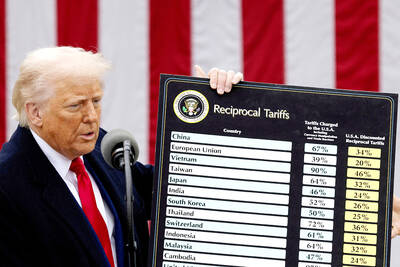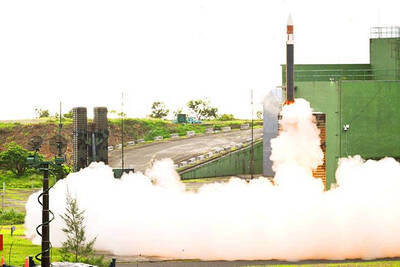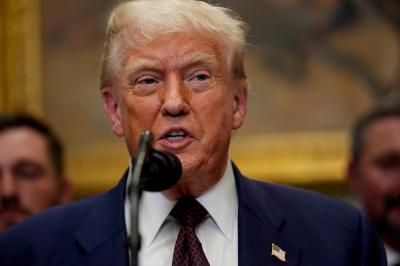India will become the world’s most populous country in 2025, surpassing China, where the population will peak one year later because of declining fertility, US Census Bureau projections released on Tuesday show.
The bureau suggests that the projected peak in China, 1.4 billion people, will be lower than previously estimated and that it will occur sooner. With the fertility rate declining to fewer than 1.6 births per woman in this decade from 2.2 in 1990, China’s overall population growth rate has slowed to 0.5 percent annually.
In contrast, India’s 1.4 percent growth rate is being driven by a fertility rate of 2.7 births per woman.
The bureau’s International Data Base projects that China’s labor force will peak at 831 million — 24 million more workers than today — in 2016. That is because the number of newcomers to the work force in their early 20s is expected to start declining in 2011 after reaching 124 million.
In India, the number of new entrants to the work force is expected to reach 116 million in 2024 before decreasing.
China and India alone account for 37 percent of the world’s population of about 6.8 billion. The bureau estimates that every minute, 250 people are born worldwide and 107 die, for an increase of more than 75 million annually.
By the time the 21st century is a quarter over, the bureau estimates, the population of the US will be more than 350 million. The US fertility rate, about 2.1 births per woman, is higher than in most developed countries, in part as a result of higher birthrates among immigrants.
After China and India, the most populous countries are, in order, the US, Indonesia, Brazil, Pakistan, Bangladesh, Nigeria, Russia and Japan.
The worldwide population estimates include more than 11 million people over the age of 90 and more than 326,000 centenarians.
More boys are being born than girls, but women start to outnumber men in their late 40s.

WAITING GAME: The US has so far only offered a ‘best rate tariff,’ which officials assume is about 15 percent, the same as Japan, a person familiar with the matter said Taiwan and the US have completed “technical consultations” regarding tariffs and a finalized rate is expected to be released soon, Executive Yuan spokeswoman Michelle Lee (李慧芝) told a news conference yesterday, as a 90-day pause on US President Donald Trump’s “reciprocal” tariffs is set to expire today. The two countries have reached a “certain degree of consensus” on issues such as tariffs, nontariff trade barriers, trade facilitation, supply chain resilience and economic security, Lee said. They also discussed opportunities for cooperation, investment and procurement, she said. A joint statement is still being negotiated and would be released once the US government has made

Authorities have detained three former Taiwan Semiconductor Manufacturing Co (TMSC, 台積電) employees on suspicion of compromising classified technology used in making 2-nanometer chips, the Taiwan High Prosecutors’ Office said yesterday. Prosecutors are holding a former TSMC engineer surnamed Chen (陳) and two recently sacked TSMC engineers, including one person surnamed Wu (吳) in detention with restricted communication, following an investigation launched on July 25, a statement said. The announcement came a day after Nikkei Asia reported on the technology theft in an exclusive story, saying TSMC had fired two workers for contravening data rules on advanced chipmaking technology. Two-nanometer wafers are the most

NEW GEAR: On top of the new Tien Kung IV air defense missiles, the military is expected to place orders for a new combat vehicle next year for delivery in 2028 Mass production of Tien Kung IV (Sky Bow IV) missiles is expected to start next year, with plans to order 122 pods, the Ministry of National Defense’s (MND) latest list of regulated military material showed. The document said that the armed forces would obtain 46 pods of the air defense missiles next year and 76 pods the year after that. The Tien Kung IV is designed to intercept cruise missiles and ballistic missiles to an altitude of 70km, compared with the 60km maximum altitude achieved by the Missile Segment Enhancement variant of PAC-3 systems. A defense source said yesterday that the number of

Taiwanese exports to the US are to be subject to a 20 percent tariff starting on Thursday next week, according to an executive order signed by US President Donald Trump yesterday. The 20 percent levy was the same as the tariffs imposed on Vietnam, Sri Lanka and Bangladesh by Trump. It was higher than the tariffs imposed on Japan, South Korea and the EU (15 percent), as well as those on the Philippines (19 percent). A Taiwan official with knowledge of the matter said it is a "phased" tariff rate, and negotiations would continue. "Once negotiations conclude, Taiwan will obtain a better